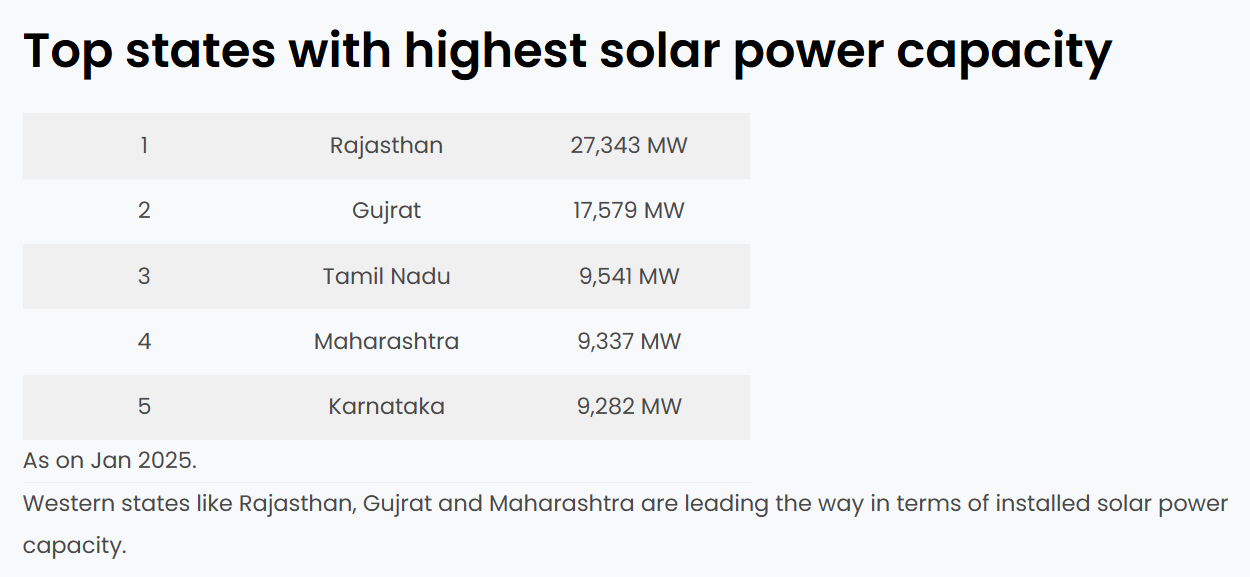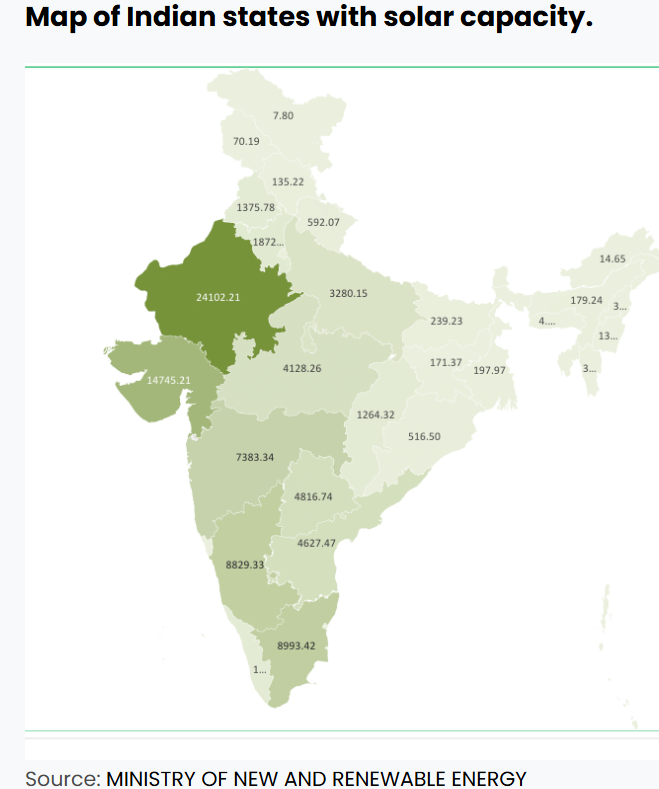7667766266
enquiry@shankarias.in
Mains: GS-III- Infrastructure-Energy
Recently, India made a remarkable progress in its clean energy transition by achieving 50% of its installed electricity capacity from non-fossil fuel sources five years ahead of its 2030 target under the Paris Agreement.
|
Status of Solar Energy in India |
|
|


What are the challenges for India?